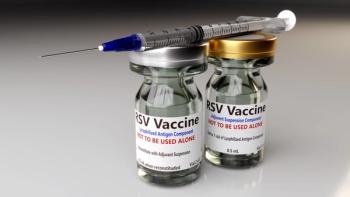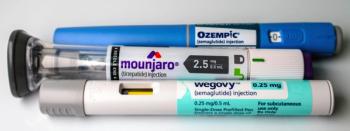
How Patient Preferences Can Inform Program Designs for Pulmonary Rehabilitation
A recent study concluded that designers of pulmonary rehabilitation programs should consider patients’ preferences on what components they feel are the most important to ensure that the programs are successful and effective.
In order to increase adherence and effectiveness of pulmonary rehabilitation (PR) programs for patients with
The study was the first to explore the preferences for PR components in patients with asthma or chronic obstructive pulmonary disease (
PR programs are a therapeutic approach that incorporates patient education with behavioral elements, such as exercise and psychological counseling. Patients with persistent disease symptoms or limited activity in daily life despite adequate outpatient care often rely on PR to improve their adherence to healthy behaviors and arm them with tools to better manage their disease.
Evidence has demonstrated that PR can stop or slow down disease progression, optimize functional status, and improve health-related quality of life (HRQOL) while also reducing the risk of exacerbations and health care costs in the long run. However, patients’ motivation and willingness to participate can impact the effectiveness of PR programs.
To assess the patient preferences on PR components, the investigators conducted a quantitative survey and literature review. The survey asked patients to evaluate each PR component by rating on a 0 to 10 Likert scale. The investigators used 2 databases for the literature review. The program components assessed included patient education, sport and exercise therapy, chest physical therapy, and mental health consultation.
The survey was distributed during the summer of 2015 and winter of late 2015 to early 2016. In total, 542 participants with asthma or COPD aged 18 or older filled out the survey after completing a 3-week inpatient program in a rehabilitation center in Germany.
Overall, 54.37% of the participants had asthma and 35.90% had COPD. The median age was 55 years. Female participants accounted for most patients with COPD (54.89%) and 48.86% of patients with asthma. Patients with asthma had higher satisfaction with the PR program and better HRQOL than patients with COPD.
Sports therapy was perceived to be the most influential PR component and had the highest mean (SD) value on the satisfaction and rehabilitation program scale ranging from 1 to 5 (3.69 [0.58]). Chest physical therapy (3.64 [0.65]) was perceived to be the second most important, followed by patient education (3.37 [0.83]) and mental health consultation (2.78 [1.09]). Adjusting for covariates did not alter the results.
In both the asthma and COPD subgroups, participants preferred a 2-hour attribute level of sports therapy. However, preferences on patient education differed, with patients with asthma expressing a stronger dislike for no patient education and patients with COPD expressing a stronger preference for 3 hours of patient education.
“The differences between the subgroups in our survey demonstrated the necessity to discriminate patient preferences carefully: they are not homogeneous or average values but might be highly specific in…subgroups as well,” the investigators said.
Participants from both groups preferred 2 hours of chest physical therapy, although patients with asthma had a weaker preference for this than patients with COPD did. Both groups also approved of 1 hour of mental health consultation.
Additionally, patients who had a lower HRQOL at the start of PR rated patient education and mental health consultations as more important than patients who started the program with a higher HRQOL.
“Existing PR programs should be adjusted in accordance with our findings by incorporating the pattern of preference-based components discussed above while considering the patients’ views of the appropriate ‘time per rehab measure,’” wrote the investigators.
The authors listed several study limitations, including that a response bias may have developed because patients were invited to participate by their treating physicians. In addition, using German participants may limit the generalizability of the results, and assessing the only patient point of view may have overshadowed the possible effects of symptom severity and comorbidities. Cost-related attributes were also not assessed.
“Changes in the patients’ perspective over time during PR should be documented closely in order to better understand the impact of the patients’ expectation, estimation and appraisal on PR success and possibly adapt treatment guidelines accordingly,” noted the investigators.
Reference
Damm K, Lingner H, Schmidt K, et al. Preferences of patients with asthma or COPD for treatments in pulmonary rehabilitation. Health Econ Rev. Published online April 17, 2021. doi:10.1186/s13561-021-00308-0
Newsletter
Stay ahead of policy, cost, and value—subscribe to AJMC for expert insights at the intersection of clinical care and health economics.














































